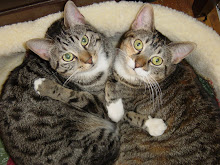I love printing with Gelli Plates ! I have purchased one in every size available, and they are great.
I've never tried making one of my own, because up until now, I thought you could only make the kind of gelatin plate that had to be refrigerated to retain it's firmness for printing on. Seemed like too much work, considering how easy the commercial Gelli Plates are to store and use over and over indefinately.
Recently I ran across some information indicating that a permanent gelatin plate could be made from simple ingredients. Of course I just had to try it! Here is the resulting gelatin plate that I made, and some pics of the trial run printing with it. I will include the recipe that I used at the end of the post.
However.... while I think this plate works fine and will hold up over time if treated with care, it did cost around $12 to make this one which is 9x9 inches. The cost effetiveness is really not so great, especially when you add in your time and mess, but it was so much fun to experiment.
You can see that the plate is like very soft plastic, and does not require refrigeration. I would, however, store it in a protected way. I am keeping this one on the sheet of glass, covered by the glass cake pan that I made it in.
This plate was "cured" for 2 days, and is slightly softer and a little stickier than the commercial brand.
Acrylic paint rolls out just fine ! The plate seems to "grab" the paint nicely.
The first print I pulled came out crisp and clean. Here I used some shapes cut out of Tyvek, which can be used over and over again. The paint only makes them stronger! I use recycled Tyvek mailing envelopes to cut shapes for masking.
After pulling a "ghost print," I removed the masks and revealed another layer for printing. I always work on 4 or 5 pieces of paper at one time to take advantage of all the printing possibilities.
Here are the results of my simple trial run. The home made plate worked fine!
I did make the mistake of using a stencil that had some dye based ink residue on it, and it did stain the plate. I'll avoid that next time.
Recipe and Instructions:
7 packets of Knox unflavored gelatin powder
1 1/2 cups (12 oz) pure glycerine [I found glycerine at a local drugstore.]
1 1/2 cups (12 oz) boiling water
You will also need a strainer, something to stir with, 2 bowls, and a flat glass pan in which you intend to pour your final plate.
Get the water to a full boil. (I microwaved it in a large pyrex measuring cup)
Add the powdered gelatin packets one at a time, slowly, and stirring. At this point you will think it might clump up... and it will be lumpy. Keep stirring and working with it. Eventually the heat and stirring will dissolve most of the lumps.
When you have most of the lumps worked out, strain the hot mixture into a second bowl, then strain it back again, this should remove the remaining lumps.
You will need to use HOT water to clean out your strainer after doing this.... it's kind of messy and sticky.
Add the glycerine to your mix, and stir gently but thoroughly. Try to avoid getting a lot of air bubbles in it.
Pour the mixture into a glass pan to set up. If there are air bubbles, try to work them out. I used a kitchen knife to skim them out.
Cover the pan and place in refrigerator (LEVEL) for 2 hours to start the plasticizing process.
Remove from refrigerator and allow it to set and cure for a day or so. I let mine cure 2 days.
[ I read somewhere that it is not absolutely necessary to refrigerate it to start with, but it seemed like a good idea to do so.]
When you are ready to remove it from the pan, use a knife to release the edges, turn the pan upside down over a clean surface, and coax it out of the pan. Gravity should make it plop right out once you get a corner started. Place it on a flat surface, like a piece of plexiglass or glass, or a flat cookie sheet. Keep it covered when you are not using it.
Try it out !
Again, when all is said and done, you may feel that the commercial product is easier to obtain and fairly priced, but if you enjoy experimenting and want to take control of the shape and size of your plate, this might appeal to you. It was a fun learning adventure and I'll be using my home made plate for quite a while, along with the others in my collection.

















